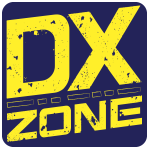Starts: 1800 UTC Saturday, July 18, 2020 Ends: 2100 UTC Sunday, July 19, 2020
I. Contest Period
27 hours for all stations, all categories. Operate any portion of the contest period you wish. (Note: Exception for QRP Hilltopper.)
II. Objectives
The objectives of this contest are for amateurs around the world to contact as many amateurs as possible in the contest period, to promote VHF, to allow VHF operators the opportunity to experience the enhanced propagation available at this time of year, and for interested amateurs to collect VHF Maidenhead grid locators for award credits.
III. Bands
All amateur radio frequencies on 50 MHz (6 meters) and 144 MHz (2 meters) may be used as authorized by local law and license class. Note exceptions in Rule XI for common repeater frequencies and 146.52 MHz.
IV. QSO Alerting Assistance
Definition: The use of any technology or other source that provides callsign or multiplier identification along with frequency information about a signal to the operator. This includes, but is not limited to, use of DX Cluster, packet, local, or remote call- sign and frequency decoding technology (e.g., CW Skimmer or Reverse Beacon Network), or operating arrangements involving other individuals.
1. All stations are allowed to use QSO Alerting Assistance. No self-spotting or asking to be spotted is allowed.
2. Stations attempting digital EME or digital meteor-scatter QSOs are allowed to spot the callsign, frequency, and sequence only. Caution: To ensure strict compliance with these rules, the adjudication process will include review of real- time and archived transcripts from websites used to coordinate alerting data during the contest period.
3. The use of non-amateur means to effect a QSO is not allowed. This includes use of the telephone, and website posts providing information beyond that of callsign, frequency, and sequence.
4. Rovers may use APRS to announce their location.
V. Categories of Competition
For all categories: Transmitters and receivers must be locat- ed within a 500-meter diameter circle or within the property limits of the station licensee’s address, whichever is greater.
1. Single Operator—All Band. Only one signal allowed at any one time; the operator may change bands at any time.
2. Single Operator—Single Band. Only one signal allowed at any one time.
3. Single-Operator All-Band QRP. There are no location restrictions — home or portable — for stations running 10 watts output or less.
4. Hilltopper. This is a single-op QRP portable category for an all-band entry limited in time to a maximum of 6 continuous hours. Backpackers and portables who do not want to devote resources and time to the full contest period are encouraged to participate, especially to activate rare grids. Any power source is acceptable.
5. Rover. A Rover station is one manned by no more than two operators, travels to more than one grid location, and signs “Rover” or “/R” with no more than one callsign.
6. Multi-Op. A multi-op station is one with two or more operators and may operate 6 and 2 meters simultaneously with only one signal per band.
Stations in any category, except Rover and QRP Hilltopper, may
operate from any single location, home, or portable.
VI. Exchange
Callsign and Maidenhead grid locator (4 characters, e.g., EM15). Signal reports are not required and should not be included in the log entry.
VII. Multipliers
The multiplier is the number of different grid locators worked per band. A grid locator is counted once per band. Exception: The rover who moves into a new grid locator may count the same grid locator more than once per band as long as the rover is him- self or herself in a new grid locator location. Such change in location must be clearly indicated in the rover’s log.
1. A rover station becomes a new QSO to the stations work- ing him or her when that rover changes grid locator.
2. The grid locator is the four-character Maidenhead grid (e.g. EM15).


